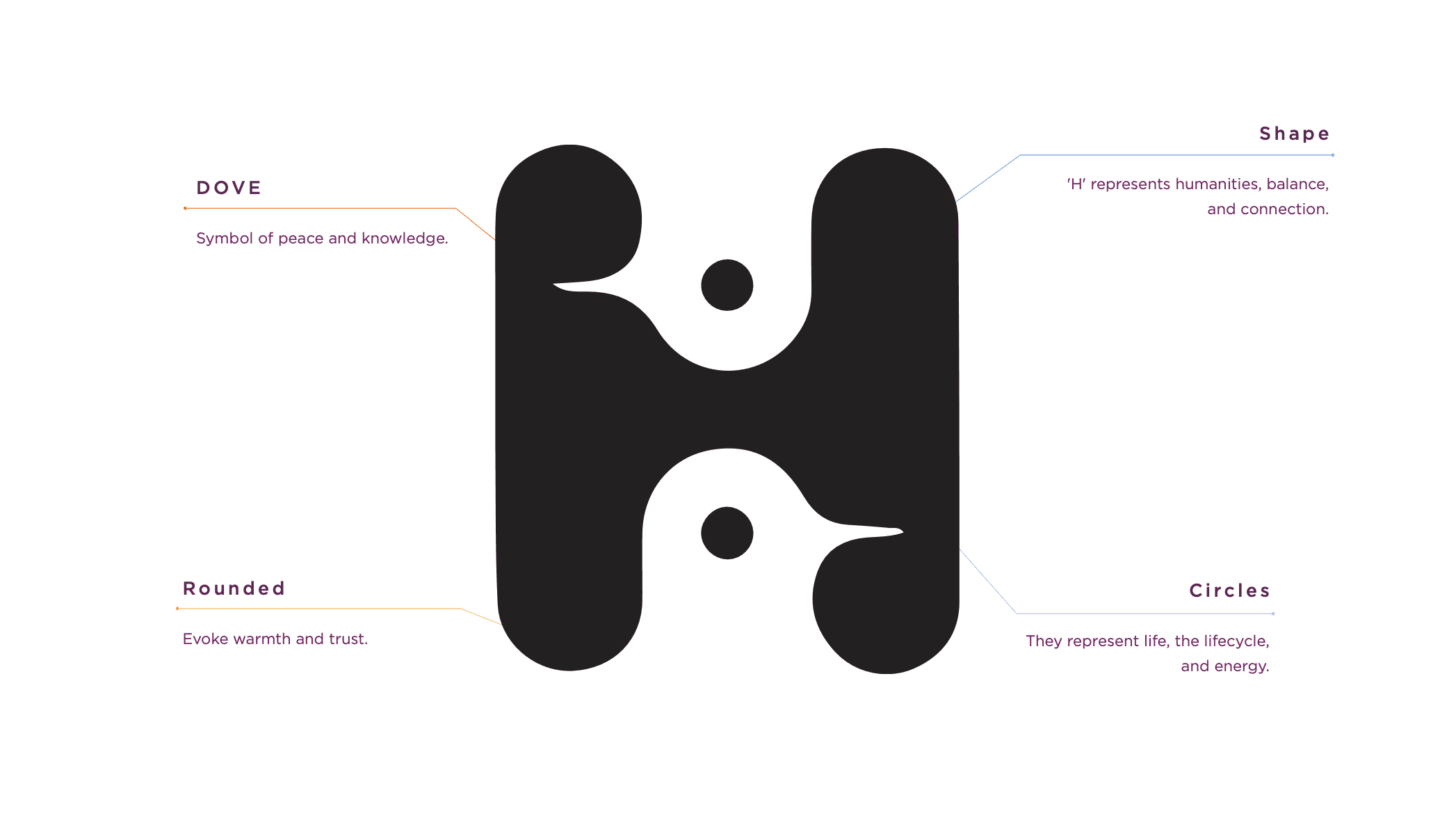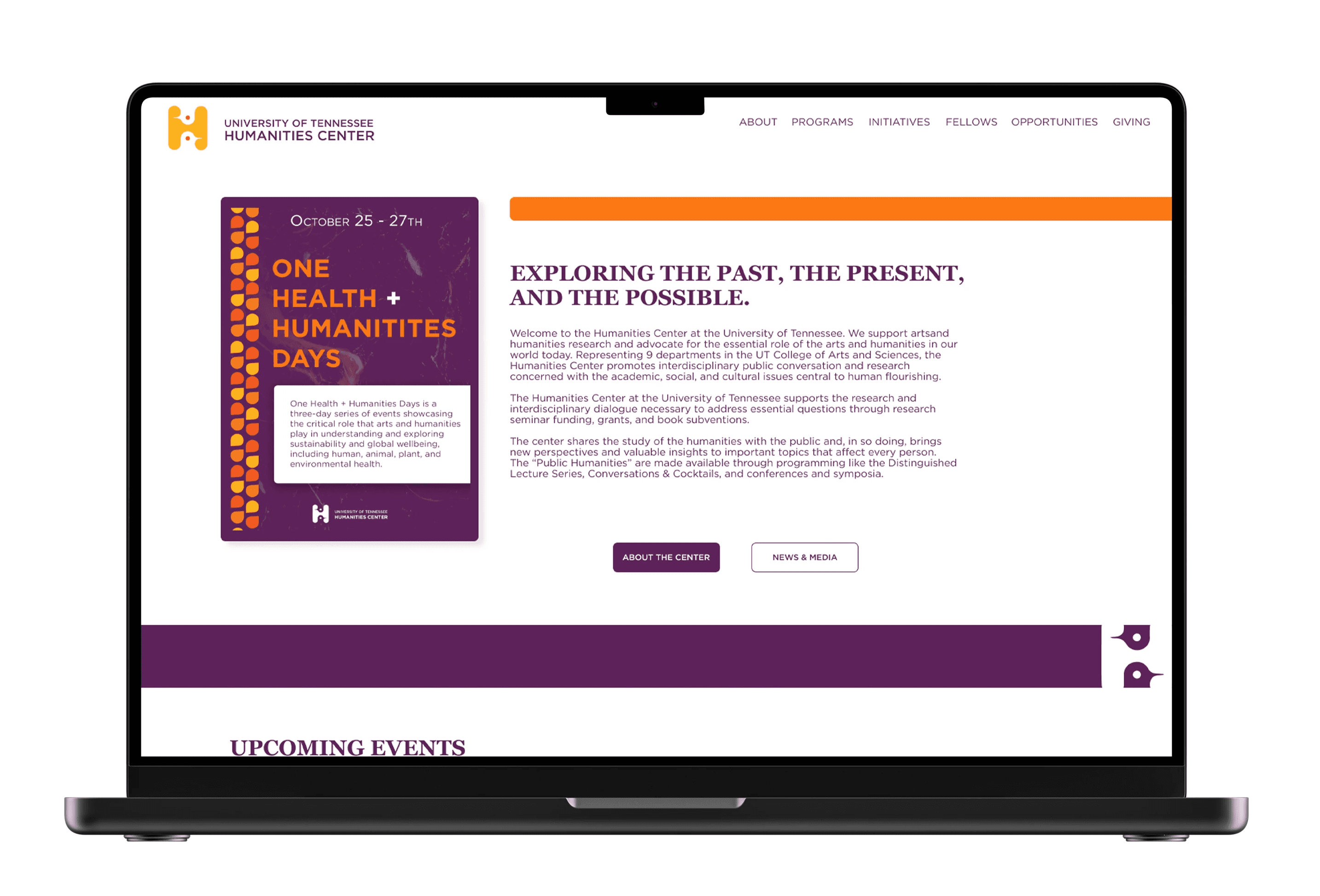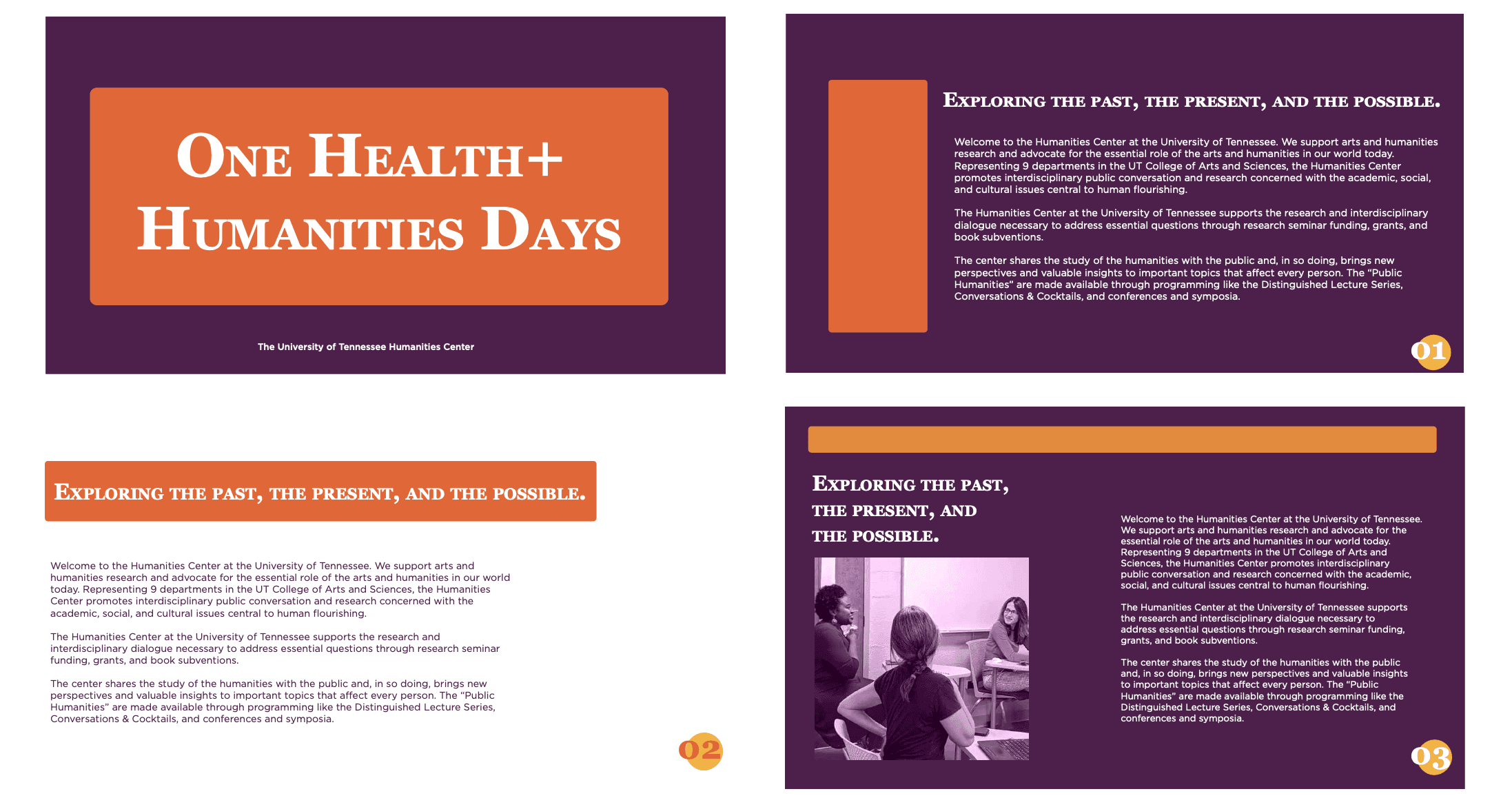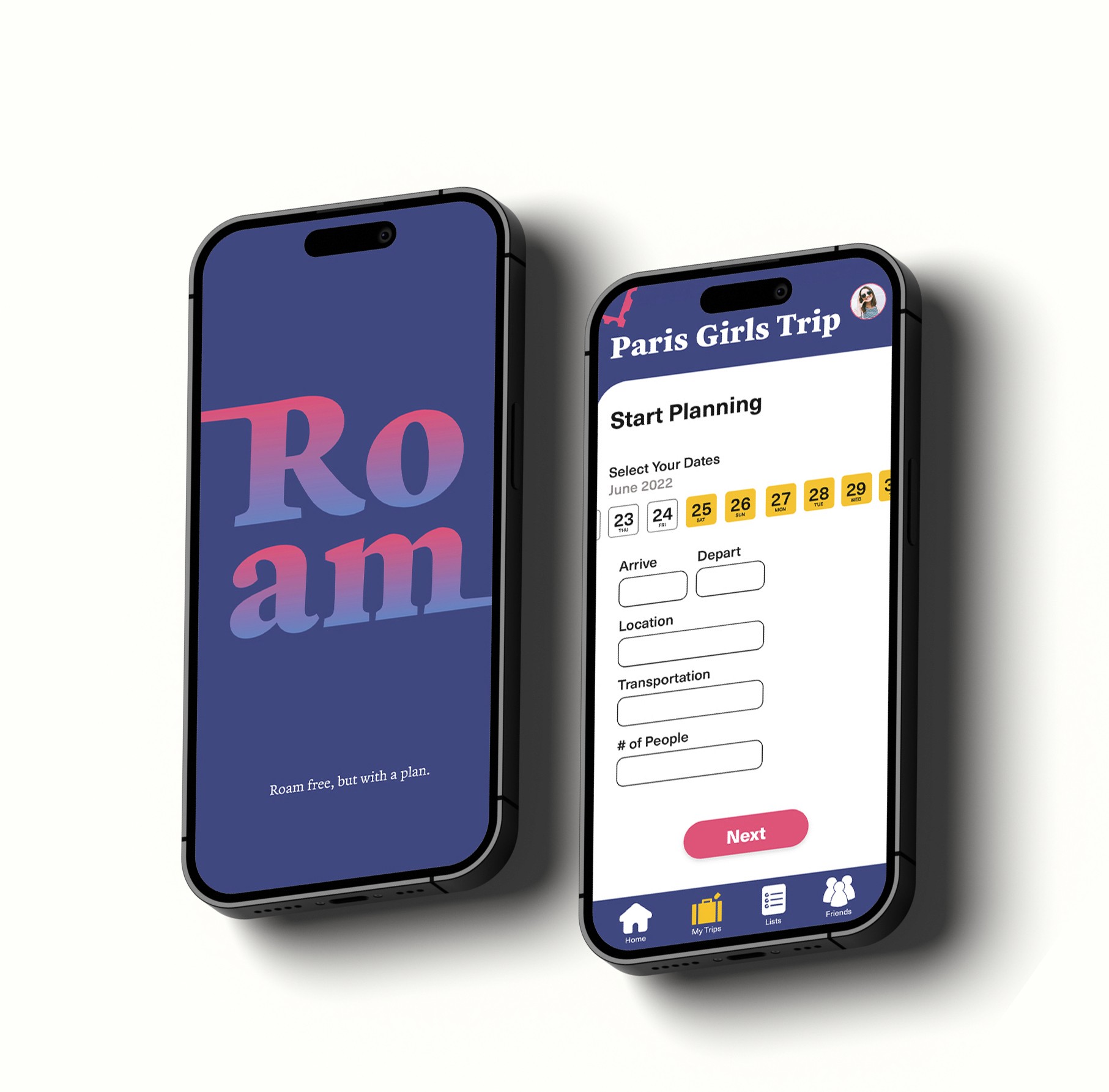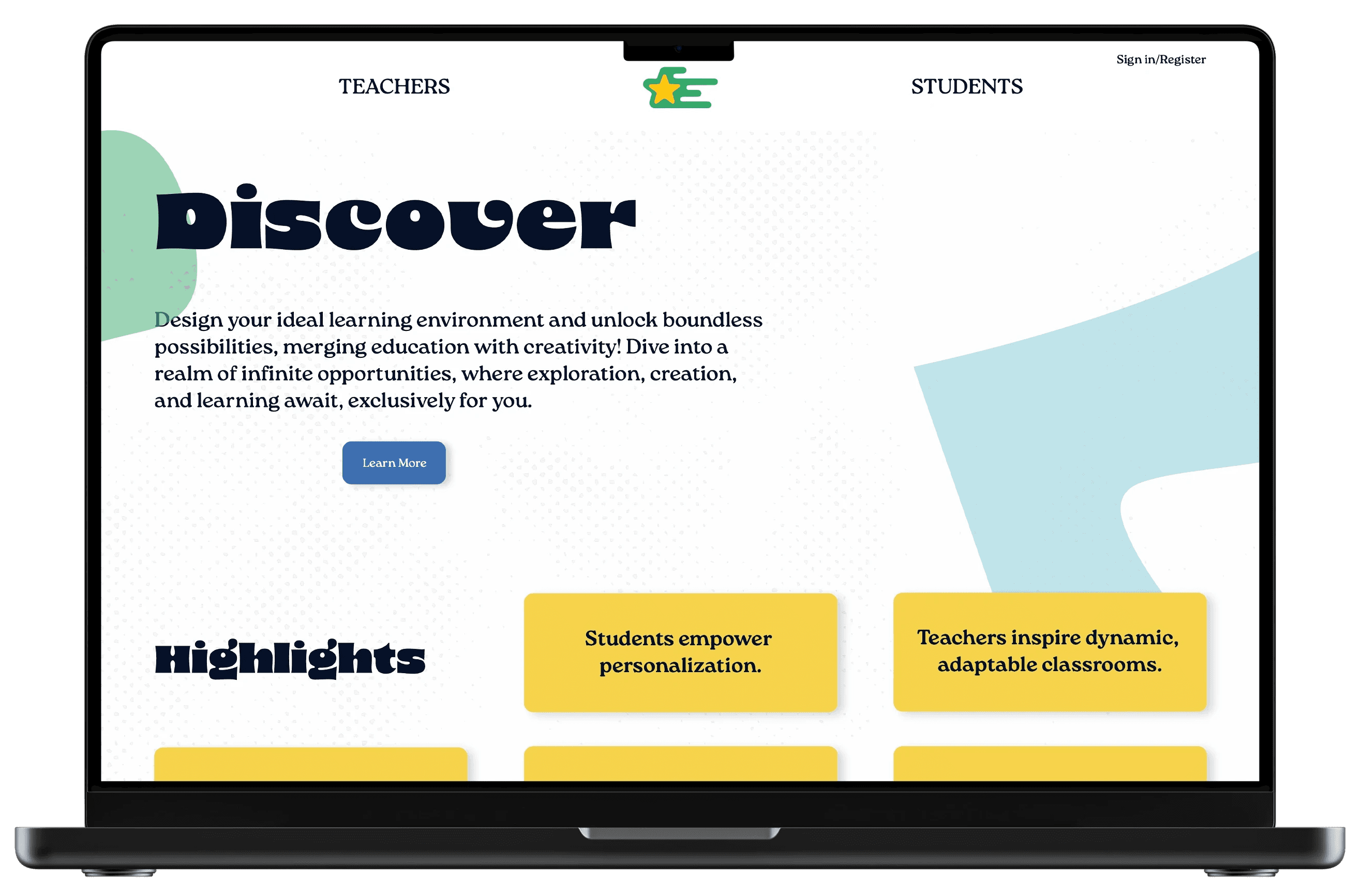Category:
Brand Design & Conference Materials
Duration:
4 weeks
The brief was to effectively rejuvenate the brand identity of the UT Humanities Center in light of its modern approach towards humanities education and deepen engagement with the campus community. The project sets out to establish the Humanities Center as a vital hub for understanding and interpreting the human experience through the redesigning of brand identity and associated deliverables.
(MY APPROACAH)
The project will involve a full branding redesign process with all activities therein, such as research, competition audits, persona development, and moodboarding. At the center of this identity is a logo that marries a dove with an 'H' shape in a strong symbol, depicting coming together in unity and connection across beliefs. This logo will be multi-colored to mean inclusivity and openness.
(VISION & INNOVATION)
The new reimagined brand identity for the UT Humanities Center is to come up with a lively and engaging appeal that will speak eloquently to both the on-campus population and the general public. Such branding must convey the commitment of the center in fostering a better understanding of the human condition and its relevance today.
(CHALLENGES)
Principal challenges include the need to develop a brand identity that is at once modern, yet respectful of the center's historical roots. Ensuring that the new brand aligns with the mission and values of the center while appealing to a diverse audience will also be important.
(PROBLEMS)
The current brand identity may fail to project the contemporary methodology of the center in humanities education. Also, it might not relate well to a younger student and faculty demographic.
(USER-CENTRIC DESIGN)
An imparted user-centered design in this revitalization of the UT Humanities Center brand will let it ring out with the target audience.
Empathy mapping: Create empathy maps to understand the thoughts, feelings, actions, and pain points of students, faculty members, and community members.
User Interviews: Doing in-depth interviews with a representative section of the target demographic to elicit useful insights about their needs, preferences, and expectations.
Surveys are used to collect quantitative data and to identify common themes and trends in the target population.
Observation: Monitoring user behavior is essential to understand how people engage with current branding and messaging.
Feedback Loops: Incorporate a feedback loop within the design process to stay tuned to the shifting needs and desires of the target audience.
By applying the above-mentioned approaches, the project will gain insight that is valuable to making design decisions, ensuring that the newly formed brand identity fulfills the needs and expectations of the UT Humanities Center community.
(USER NEEDS)
The ideal audience for the UT Humanities Center brand would-be students, faculty members, staff, and citizens with an interest in the humanities. It is expected that this particular segment would want the brand to be engaging, inclusive, and relevant to life. In addition, they like a visually appealing brand that they can easily understand.

